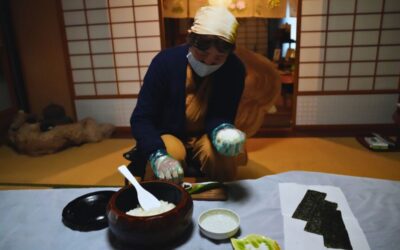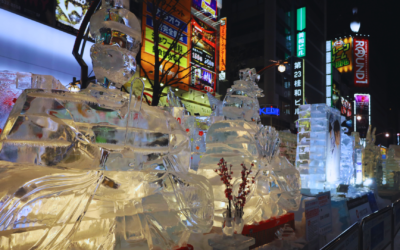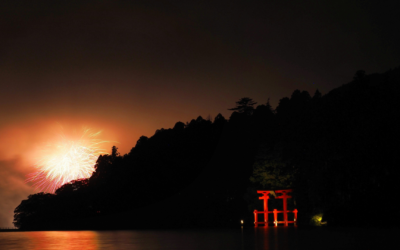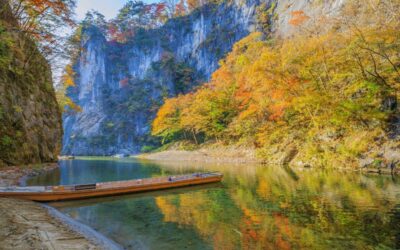Planning a trip to Japan? We’ve got you covered! If you haven’t already, make sure to check out our comprehensive guide on the 60+ travel tips for Japan to get started. Now, let’s zoom in on Kyoto, the cultural heart of this fascinating country.
Why does Kyoto often top the bucket list for visitors to Japan? It’s simple: the city’s unmatched blend of ancient traditions, serene temples, and breathtaking landscapes creates an irresistible allure. Whether you’re wandering through the iconic bamboo groves of Arashiyama, visiting the majestic Kinkaku-ji (Golden Pavilion), or exploring the tranquil gardens of Ryoan-ji, Kyoto’s diverse attractions ensure that every visitor finds a unique and memorable experience.
Though it’s important to note that as of April 2024, tourists are no longer allowed to enter the private alleyways in Gion due to concerns over overtourism and the behaviour of some visitors, travellers can still enjoy the public areas, such as the main Hanamikoji Street, where the essence of Gion’s charm remains vibrant.
So, let us give you the insider tips and essential info you need to navigate this enchanting city like a pro. So, buckle up and get ready to dive into the must-know Kyoto travel tips that will make your trip unforgettable!
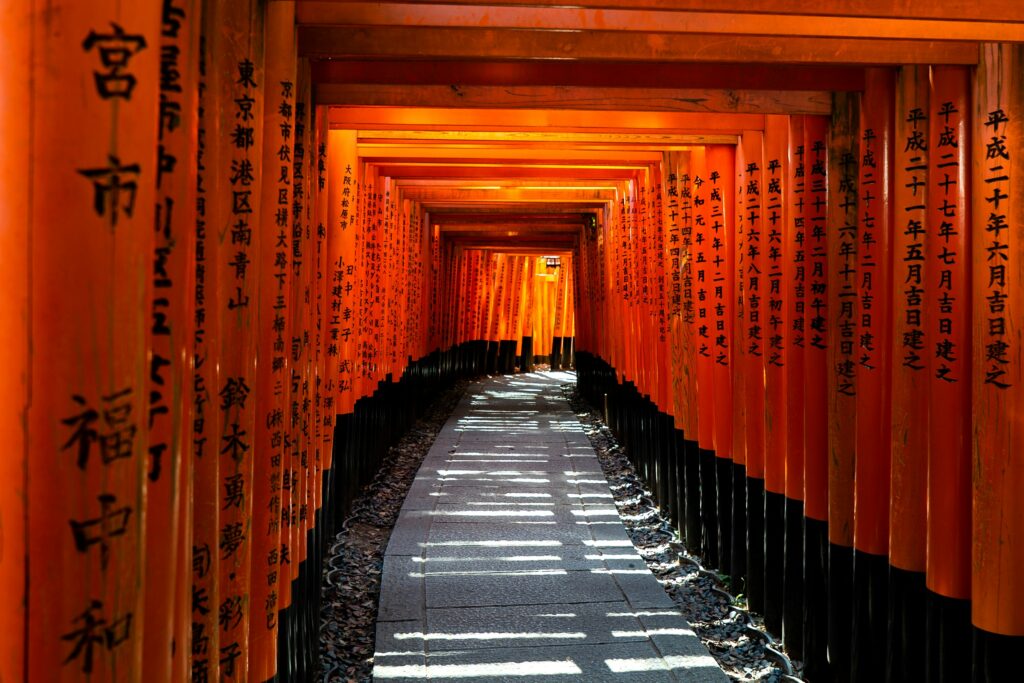
Travel Planning Tips
Before diving into the nitty-gritty of Kyoto travel tips, let’s take a moment to set the stage. Planning a trip to such a historic and picturesque city can be overwhelming, but don’t worry—we’re here to help.
1. Pick the Best Area to Stay in Kyoto

When booking accommodations in Kyoto, consider the nature of your visit and what you hope to achieve to select the best location:
- Kyoto Station Area: Ideal for travellers planning multiple day trips. Staying around Kyoto Station provides convenient access to both local and regional transit options, making it easy to explore beyond the city limits.
- Higashiyama Area: Perfect for those seeking a luxurious stay amidst nature. This area is known for its quiet, scenic beauty, complemented by upscale accommodations that are often integrated with the serene landscape. It’s close to major cultural sites like Kiyomizu-dera and the Philosopher’s Path.
- Shijo/Karasuma Area: Opt for this central district if you want easy access to shopping and key attractions. The area is bustling with activity, offering a mix of traditional sights and modern conveniences, ideal for travellers who want to be in the heart of it all.
- Arashiyama: For the utmost peace and quiet, consider staying in Arashiyama. This district is a bit removed from the city center, providing a tranquil environment surrounded by nature. Keep in mind that while it offers ultimate serenity, you may need to rely on taxis for transportation, especially in the evenings.
2. Book Early for Peak Seasons

It’s important to book your accommodations well in advance, especially if you’re planning to visit Kyoto during its peak travel seasons. These typically include the cherry blossom season in spring and the vibrant autumn foliage period. Both times of year are visually stunning and hugely popular, attracting travellers from around the world. Because demand is so high, hotel prices tend to rise, and the best places book out quickly. To secure your ideal location and avoid disappointment, plan ahead and reserve your stay early.
3. Travel During Off-Peak Months
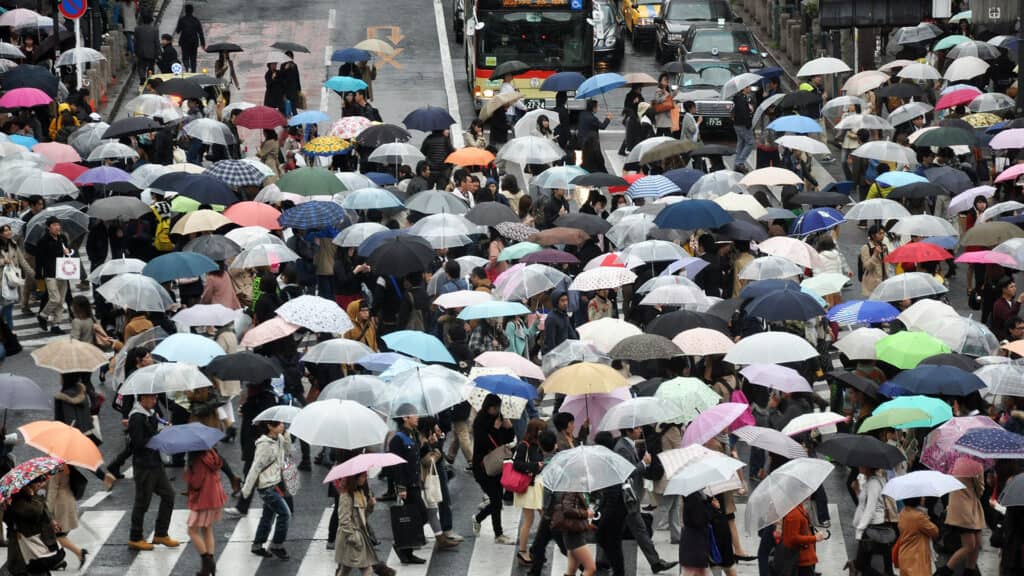
For a quieter, more budget-friendly experience, consider visiting Kyoto during the off-peak months. June, which falls during Japan’s rainy season, usually sees fewer tourists. Although you may encounter some wet days, you’ll benefit from lower accommodation prices and thinner crowds.
Similarly, the summer months of July and August—despite the heat and humidity—tend to be less crowded than the spring and autumn. If you’re willing to handle the warm weather, you’ll likely enjoy easier access to popular sites and more affordable travel deals.
4. Use Google Maps to Navigate
Download Google Maps – if you haven’t already. Google Maps is highly reliable and accurate in Japan. It provides real-time information on train schedules, platform numbers, and the best routes to your destination.
Simply enter your current location and destination, and Google Maps will offer detailed step-by-step directions, including walking paths within stations. Google Maps is widely trusted by both locals and tourists for its accuracy in Japan. It regularly updates to reflect any changes in train schedules or routes.
5. Use Our Kyoto Itinerary Guide
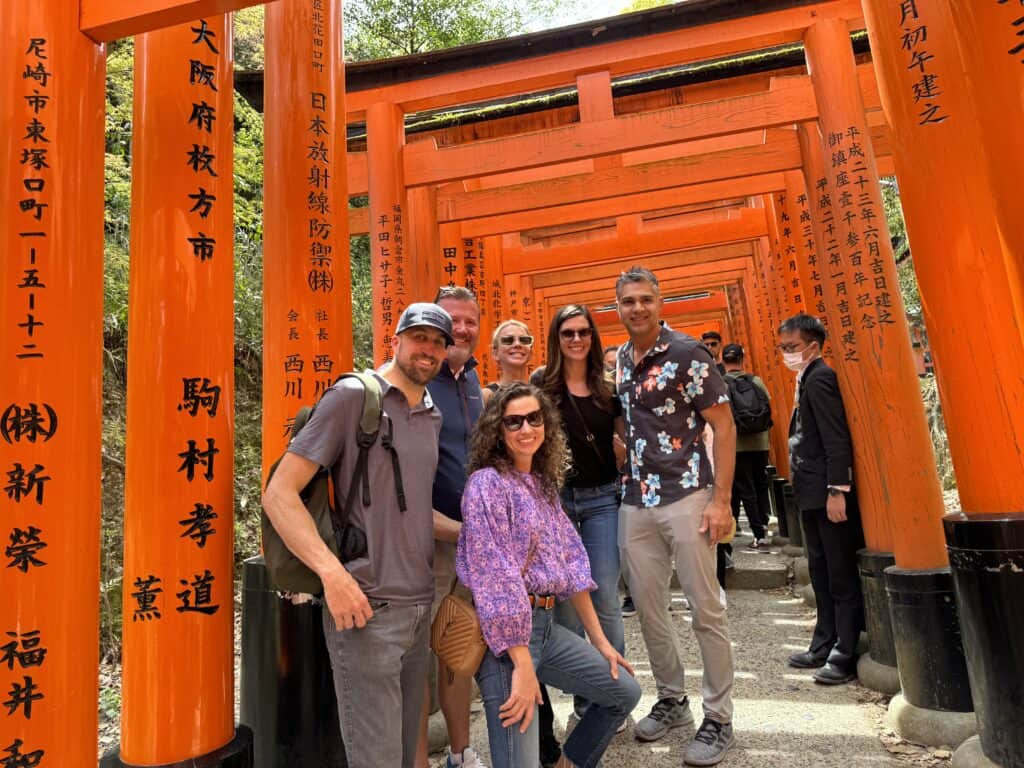
Consult this Flip Japan Guide itinerary in advance to get some ideas on which spots to visit. Among others, it covers the following spots:
- Arashiyama: Famous for its bamboo groves and picturesque scenery, Arashiyama is a tranquil retreat on the western edge of Kyoto. Whether you’re there to enjoy a peaceful walk through the bamboo or to explore Tenryu-ji Temple, it’s a place where the beauty of nature truly shines.
- Fushimi Inari Shrine: With its thousands of vermilion torii gates, this shrine offers one of the most iconic sights in all of Japan. The hike up the mountain is not only a spiritual journey but also provides fantastic views over Kyoto.
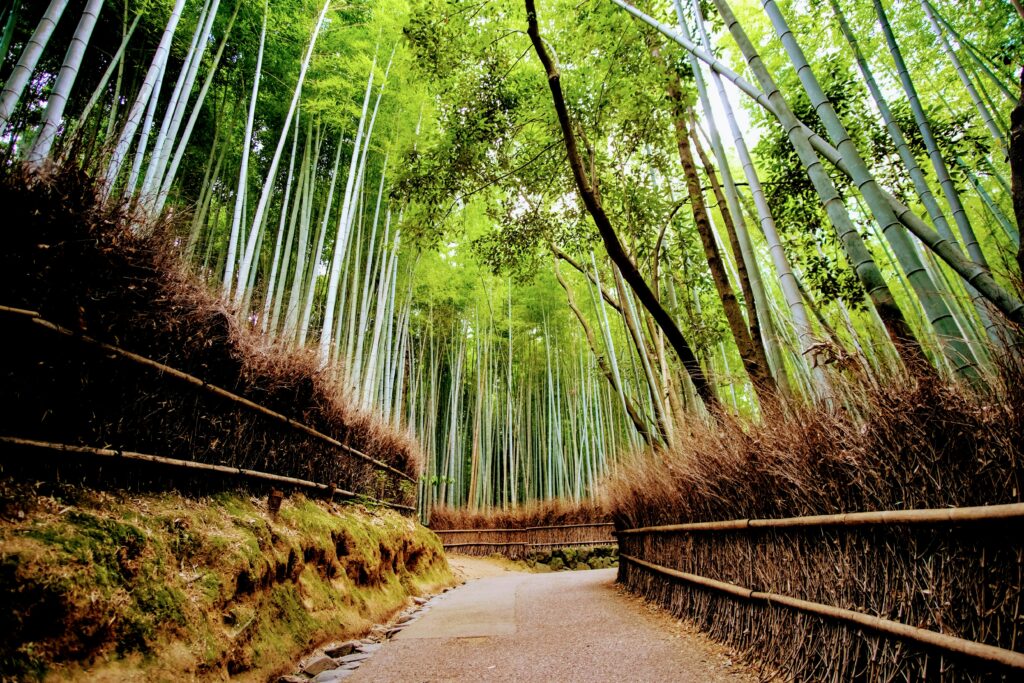
6. Reserve Restaurants in Advance
Kyoto is a world-renowned culinary city, and many of its best restaurants, especially those offering traditional kaiseki multi-course meals, can get booked out days or even weeks in advance. To avoid missing out on a special dining experience, make your restaurant reservations ahead of time.
This is particularly important if you’re hoping to dine at high-end establishments or places with limited seating. Planning in advance will ensure you get to enjoy Kyoto’s refined and beautifully presented cuisine without stress.
7. Time Your Trip with Kyoto Festivals
Kyoto’s festivals are a highlight of the city’s cultural calendar and offer a deep dive into local traditions. If your travel dates are flexible, try to plan your visit around one of these major events: the Aoi Matsuri in May, the Gion Matsuri in July, or the Jidai Matsuri in October. These festivals are not only visually stunning but also provide a vibrant look into Kyoto’s history and community spirit. Attending one is a memorable way to enrich your experience and see Kyoto at its most lively and festive.
8. Visit Arashiyama Early
If you’re visiting Kyoto for the first time, chances are high that Arashiyama is already on your list. This scenic district, known for its breathtaking bamboo groves and riverside charm, can become incredibly busy later in the day—especially around the Bamboo Grove. To fully enjoy the serenity of this area, plan to visit early in the morning. Not only will you avoid the biggest crowds, but you’ll also experience the natural beauty in a much more peaceful, magical setting.
9. Wear Comfy Shoes for Hilly Areas
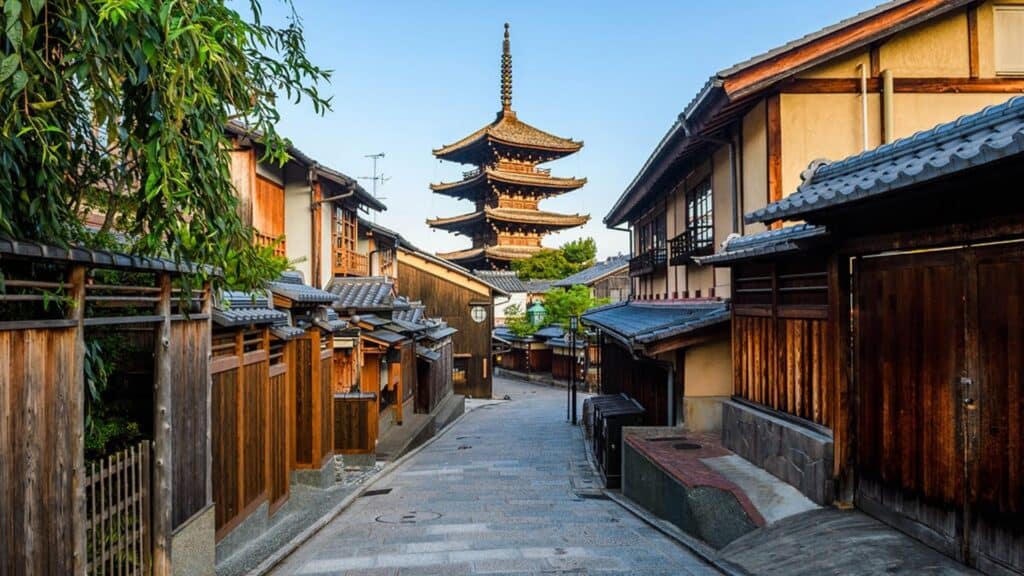
While central Kyoto is relatively flat and easy to navigate, it’s important to prepare for different terrains, especially if you’re planning to visit the more scenic outskirts. The popular Higashiyama area, known for its historic sites and beautiful vistas, is particularly hilly. As you explore this district, expect quite a few slopes and staircases, especially around major attractions like Kiyomizu-dera Temple.
Wearing comfortable shoes is a must, and if you’re not used to walking on inclines, take it slow and allow extra time to get from place to place. This preparation will make your visit more enjoyable and less tiring, letting you fully appreciate the beauty and charm of Kyoto’s hilly landscapes.
10. Join a Customised Local Tour
To truly delve into Kyoto’s rich history and vibrant culture, consider joining a guided tour.
Flip Japan offers the “Customised Kyoto Must-Sees and Local Gems with a Local” tour, which is a private, 5-hour journey that’s completely customizable to your interests. This tour is an excellent way to explore both iconic landmarks and hidden local gems through the eyes of a knowledgeable local guide. You’ll discover the stories and secrets of Kyoto that only locals know, enhancing your understanding and appreciation of this enchanting city.
Area Tips

Kyoto is a historic and enchanting city with a multitude of neighbourhoods, each offering its own unique vibe and attractions. Here are some tips on must-visit areas and hidden gems that will help you make the most of your Kyoto adventure.
11. Explore Kyoto’s Famous Districts
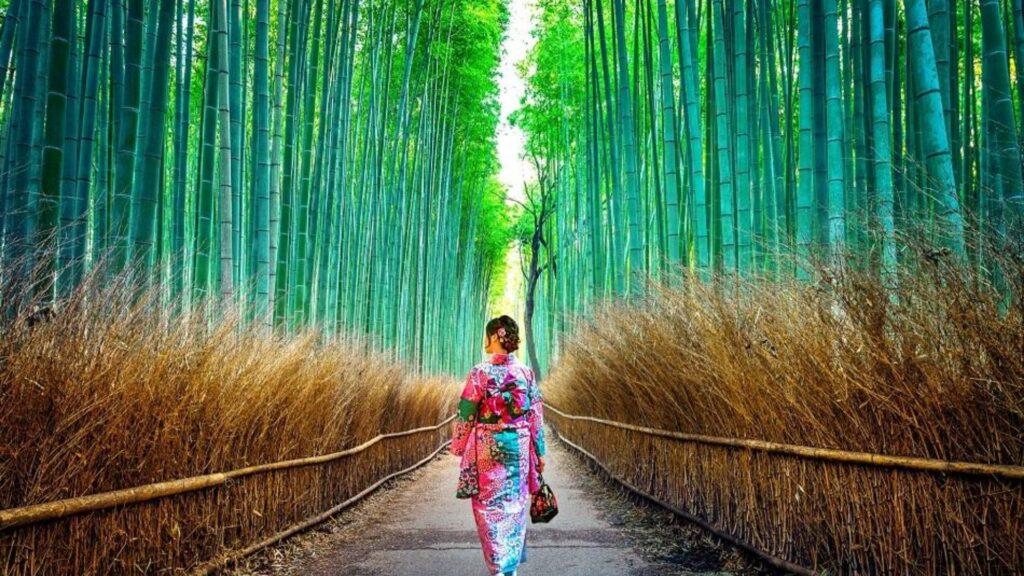
Kyoto’s most iconic districts are popular for a reason and absolutely worth exploring, even if you’re not usually a fan of busy tourist spots.
Gion, for example, is famous for its traditional wooden machiya houses, geisha culture, and historic streets. While access to some private alleyways is now restricted to preserve local privacy, you can still enjoy Hanamikoji Street and may even catch a glimpse of a geiko or maiko heading to an appointment.
Arashiyama offers beautiful bamboo groves, the scenic Togetsukyo Bridge, and sites like Iwatayama Monkey Park and Tenryu-ji Temple. And don’t miss Fushimi Inari Shrine, known for its thousands of red torii gates that line the path up Mount Inari, offering stunning views over Kyoto as you climb.
12. Check Out Lesser-Known Neighbourhoods
For a more local and less touristy Kyoto experience, explore some of the city’s lesser-known neighbourhoods. Nishijin is rich in textile history and features elegant kimono shops and the Nishijin Textile Center, where you can learn about traditional weaving techniques.
Shimogamo, home to the ancient Shimogamo Shrine, is nestled within the peaceful Tadasu no Mori forest—a serene retreat filled with spiritual atmosphere.
Then there’s Ohara, a rural district north of the city that offers tranquil temples like Sanzen-in and lush, mossy gardens perfect for unwinding. These areas let you experience a quieter, more authentic side of Kyoto.
13. Take Day Trips from Kyoto
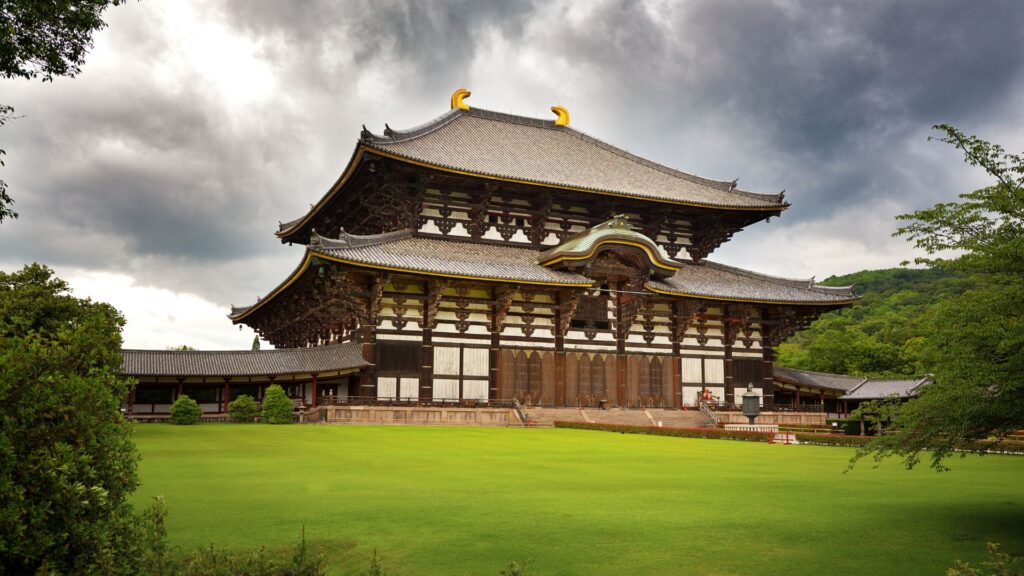
If you have enough time, also consider taking these day trips from Kyoto:
- Nara: Famous for its friendly deer that roam freely in Nara Park and its impressive Todai-ji Temple, which houses the Great Buddha. Explore ancient temples, shrines, and beautiful gardens in this historic city.
- Uji: Renowned for its high-quality green tea and the beautiful Byodo-in Temple, a UNESCO World Heritage site. Take a relaxing boat ride on the Uji River and participate in a traditional tea ceremony. Check out this Uji Area Guide before adding this to your itinerary.
- Amanohashidate: Known as one of Japan’s three most scenic views, this natural sandbar spans the mouth of Miyazu Bay. Walk or cycle along the sandbar, visit nearby temples, and take in the stunning panoramic views from the mountaintop parks.
- Shiga and the Lake Biwa Area: Just a short journey from Kyoto, the Shiga region and its majestic Lake Biwa offer a refreshing escape. Lake Biwa, Japan’s largest freshwater lake, is surrounded by scenic mountains and is home to historic sites and tranquil water activities.
Whether you’re interested in exploring the lakeside temples, enjoying water sports, or simply relaxing by the serene waters, the Lake Biwa area provides a peaceful contrast to the bustling tourist spots in Kyoto.
14. Discover Other Kyoto Neighbourhoods
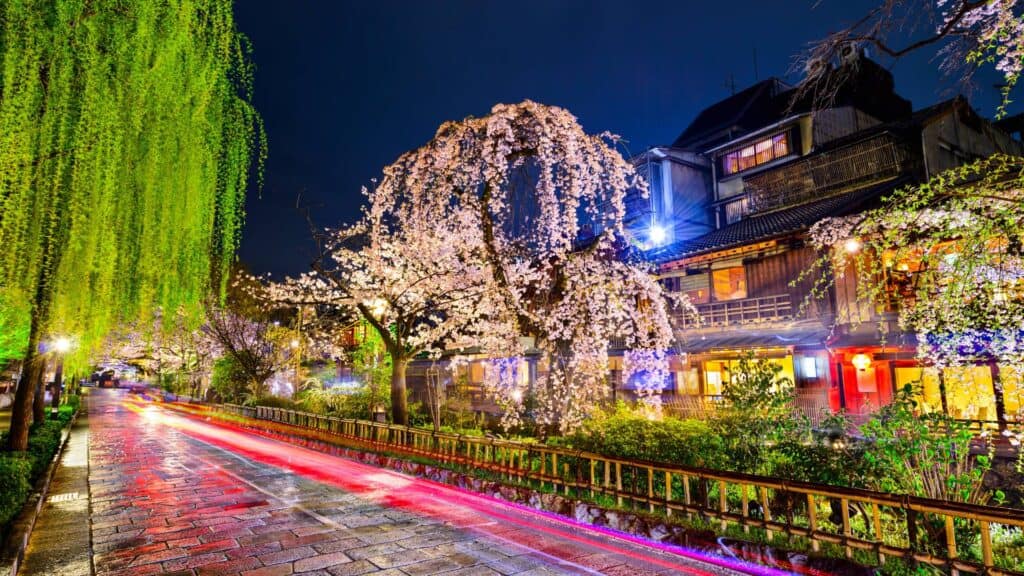
If you would prefer to spend more time in Kyoto, consider checking out these other Kyoto neighbourhoods that just might perfectly fit your interests:
- Pontocho: Foodies should think about dropping by this narrow alley lined with traditional wooden buildings, one of Kyoto’s most atmospheric dining areas. Enjoy an evening meal at one of the many restaurants overlooking the Kamogawa River.
- Kitano: Bargain hunters would enjoy this neighbourhood, known for the Kitano Tenmangu Shrine, as it hosts a lively flea market on the 25th of each month. This area also boasts beautiful plum and maple trees, making it a great spot for seasonal visits.
This area is perfect for those looking to explore a part of Kyoto steeped in tranquility and rich historical significance. Enjoy the serene environment and perhaps partake in a traditional tea ceremony or a quiet stroll through the ancient forest.
Culture and Etiquette tips
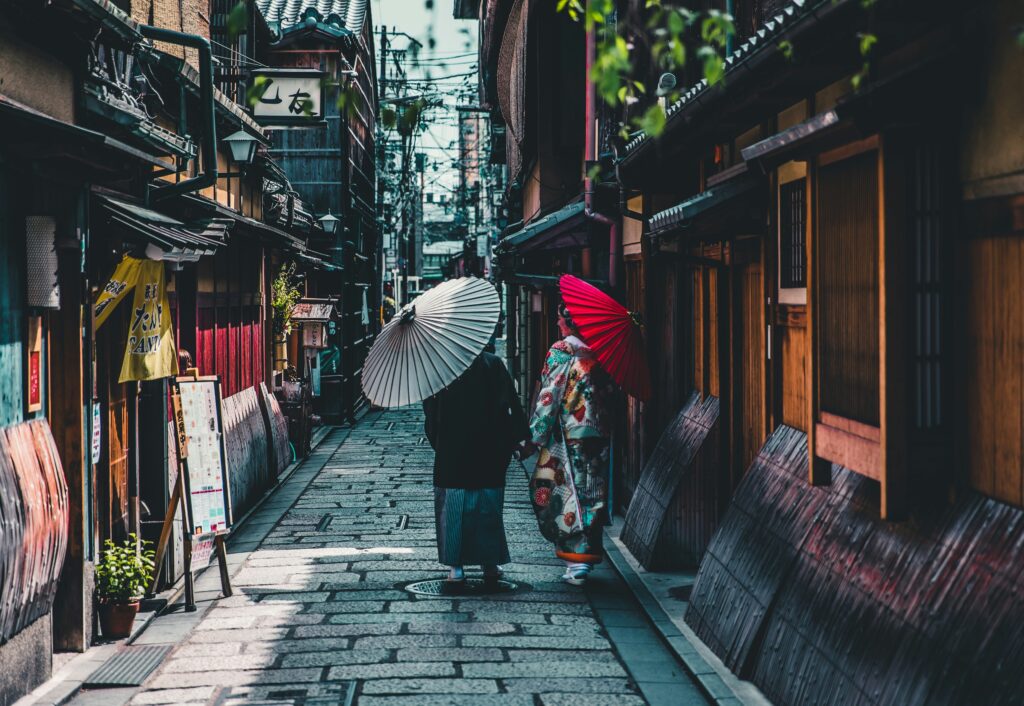
Kyoto is a city where traditional customs and modern life coexist harmoniously. Understanding and respecting the local culture and etiquette is crucial for making the most of your visit. Here are some essential tips to help you navigate Kyoto’s cultural landscape with respect and appreciation:
15. Dress Conservatively in Formal Areas
Though it is, of course, not a requirement for tourists, you can blend in more easily by dressing and behaving more conservatively in these formal areas:
- Central Kyoto (including areas around Kyoto Station and the Imperial Palace): These districts are bustling with business activities, government buildings, and significant cultural landmarks. Dress neatly and modestly, especially when visiting places like the Kyoto Imperial Palace. Avoid talking loudly, and be particularly polite in interactions with shop staff and restaurant employees. Maintaining a formal demeanor and being punctual for appointments or reservations reflects well on you and shows respect for Japan’s cultural heritage.
- Nijo Castle and surrounding areas: This historical site attracts many visitors, and maintaining a respectful and quiet demeanor is essential. Dress conservatively and follow all posted rules. This area’s atmosphere calls for a higher level of decorum to honor its historical significance.
16. Relax in Casual, Youthful Spots

Good manners are always a requirement when traveling, but you can let your hair down a bit more in these Kyoto areas that are more casual and youthful:
- Pontocho: Known for its vibrant nightlife and dining scene, Pontocho has a more relaxed atmosphere. While basic politeness is always expected, the dress code here is more casual, and you can be a bit more expressive in your behaviour. It’s common to see people enjoying themselves at izakayas and bars. Feel free to express yourself, but still respect public decorum (e.g., avoid being excessively loud or disruptive).
- Nishiki Market: This lively market area is known for its bustling and energetic environment. While exploring the market, you can dress casually and enjoy the dynamic atmosphere. Engage with vendors respectfully and enjoy sampling local delicacies, but always be mindful of your surroundings and avoid blocking walkways.
17. Appreciate Kaiseki Dining Etiquette
If dining in a kaiseki or omakase restaurant, it is customary to appreciate the meticulous presentation and pacing of the meal. These high-end dining experiences are not just meals but carefully curated expressions of the chef’s artistry.
While there is usually no strict dress code, it is advisable to avoid wearing strong perfumes as the scents can interfere with the enjoyment and delicate flavours of the dishes. Be sure to express your gratitude to the staff for their exceptional service and the remarkable dining experience they provide.
18. Join Traditional Cultural Activities
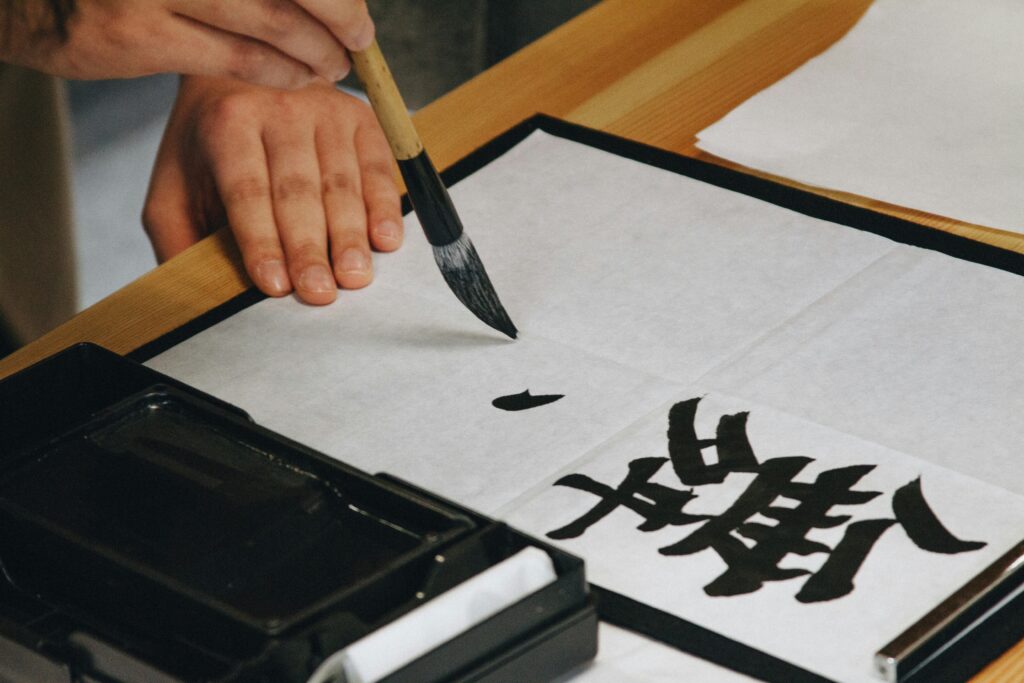
Kyoto is a treasure trove of traditional Japanese experiences, and engaging with these can enrich your visit immensely. From the calming rituals of a tea ceremony to the focused precision of calligraphy, each activity offers a deeper understanding of Japan’s rich cultural heritage.
Consider participating in a meditation session at a local temple to truly connect with the serene spirit of Kyoto. Flip Japan offers guided experiences in these traditional arts, ensuring you have a meaningful and authentic engagement.
Whether you’re looking to find peace through meditation, enjoy the intricate dance of the tea ceremony, or express yourself through the art of calligraphy, we can help you immerse fully in these revered cultural practices. Check out our services to find the perfect cultural experience that will enhance your journey through Kyoto.
Tips Related to Transportation and Getting Around
Kyoto, with its rich history and traditional charm, can be a bit overwhelming for first-time visitors due to its unique layout and bustling tourist spots. However, with the right preparation and a few practical tips, you can navigate the city’s transportation system with ease and confidence.
19. Use Suica or IC Cards

If you already have an IC card like Suica from your travels in other parts of Japan, you won’t need to purchase a separate card for your stay in Osaka. Suica, along with other cards such as ICOCA and PiTaPa, work seamlessly across Osaka’s extensive network of trains, subways, and buses.
These rechargeable smart cards are not only essential for smooth and efficient travel throughout the Kansai region but are also convenient for making purchases at many convenience stores, vending machines, and even some restaurants. This makes navigating and enjoying Osaka both simple and hassle-free.
20. Avoid Busy Bus and Train Lines
Be aware of specific bus and train lines that can get crowded with tourists:
- Kyoto City Buses: Buses can be very crowded, especially those heading to popular tourist destinations like Kinkaku-ji, Ginkaku-ji, and Kiyomizu-dera. Plan to travel early in the morning or later in the afternoon to avoid the heaviest crowds.
- JR Sagano Line: This line, which takes you to the Arashiyama area, is particularly busy during peak tourist seasons. Try to visit early in the day to enjoy a more relaxed journey.
- Keihan Main Line: This line is convenient for accessing Fushimi Inari Shrine and can get quite busy. Visiting these sites early in the morning or late in the afternoon can help you avoid the rush.
21. Handle Crowds Like a Local

If you do find yourself caught in a crowded situation while using public transport in Kyoto, try to navigate it like a pro by blending in with the local commuter flow. Move efficiently through stations and on platforms, staying alert and quick so you’re not blocking others, especially during peak hours.
When using escalators, stand on the right-hand side to let people pass on the left—a small gesture that goes a long way in busy stations. If you’re travelling in the morning, consider using the Women-Only Cars, which offer a safer and more comfortable environment during rush hour.
Lastly, keep your luggage compact and easy to manage. Large bags can make navigating tight spaces a hassle for you and those around you, so travelling light will make the experience far less stressful.
22. Rent a Bike to Explore Kyoto
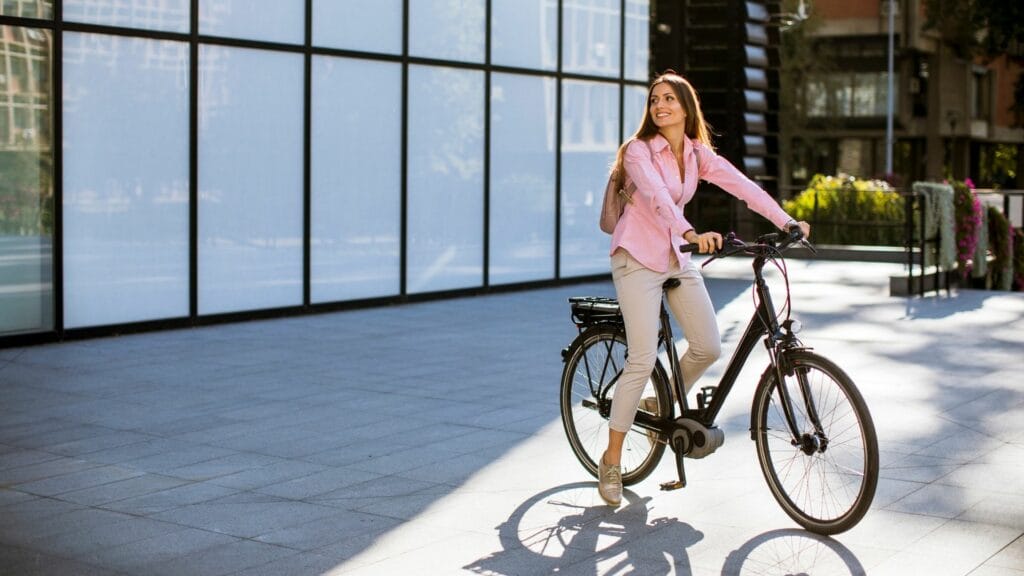
Renting a bike in Kyoto is a fantastic way to explore the city at your own pace. The relatively flat terrain and scenic routes—especially along the Kamo River or the Philosopher’s Path—make cycling both relaxing and practical. There are plenty of rental shops throughout the city with affordable options.
Just make sure to follow basic cycling etiquette while riding. Always keep to the left side of the road, obey traffic signals, and use bike lanes where possible. Be considerate of pedestrians, especially on shared paths. Helmets aren’t mandatory but are a good idea for safety, and make sure to park only in designated areas to avoid fines or having your bike towed.
23. Use Taxis for Efficiency

In Kyoto, using taxis can significantly enhance your travel comfort, especially when public transportation routes might involve lengthy transfers and extended travel times. For instance, a trip that takes 45 minutes by public transportation might only be a 15-minute taxi ride.
While taxis in Kyoto are not prohibitively expensive, they offer a convenient alternative to navigating multiple bus or train connections, particularly if you are traveling in a group or with luggage.
- Taxi Availability: To tell if a taxi’s available, look for a red-lit sign in the front window or on the dashboard that usually says 空車, which means the taxi is free. If you see that, you’re good to flag it down. You can easily hail a taxi on the street or use taxi-hailing apps like Go, which integrates seamlessly with Google Maps for easy booking.
- Payment Convenience: Most taxis in Kyoto accept payment via ICOCA, Suica, or PASMO cards, in addition to credit cards. This makes it easy to pay without worrying about having the correct cash.
24. Get a 1-Day Kyoto Sightseeing Pass
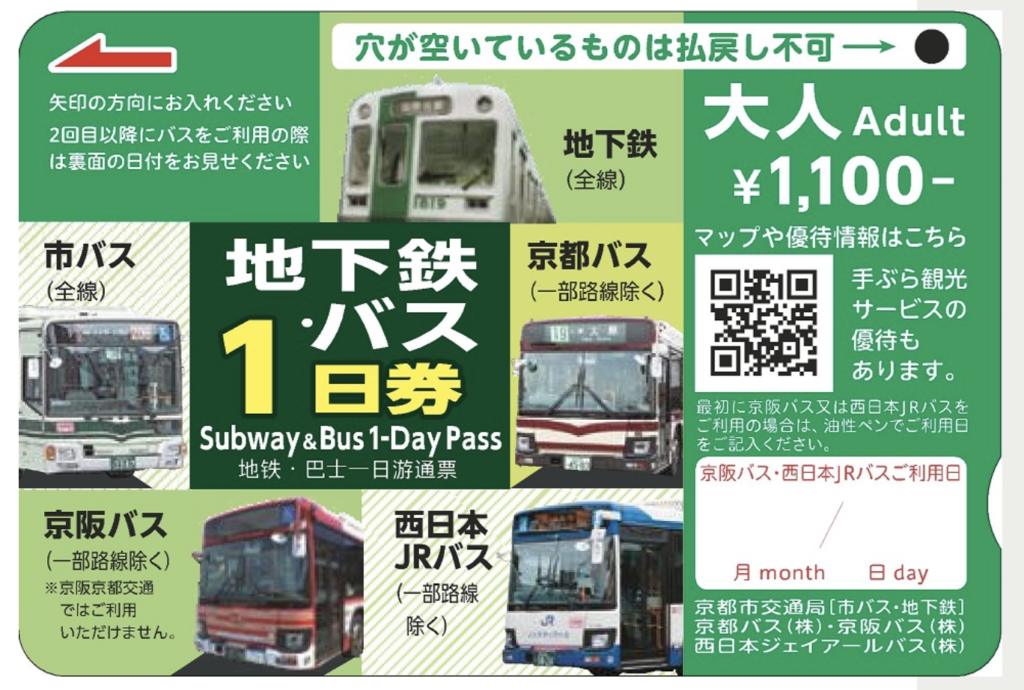
Invest in a 1-Day Kyoto Sightseeing Pass. This pass is exclusively for foreign tourists, perfect for exploring the area’s key attractions like Higashiyama, Uji, and Fushimi along the Keihan Railway Line. This pass is only available to those who enter Japan with a “short-term visitor” visa, so be sure to have your passport ready at the time of purchase.
With this pass, you can enjoy unlimited rides between Iwashimizu-hachimangu and Demachiyanagi Stations on the Keihan Main Line, Keihan Uji Line, and Iwashimizu-hachimangu-sando-cable for just 1,000-1,200 yen.
Packing Tips
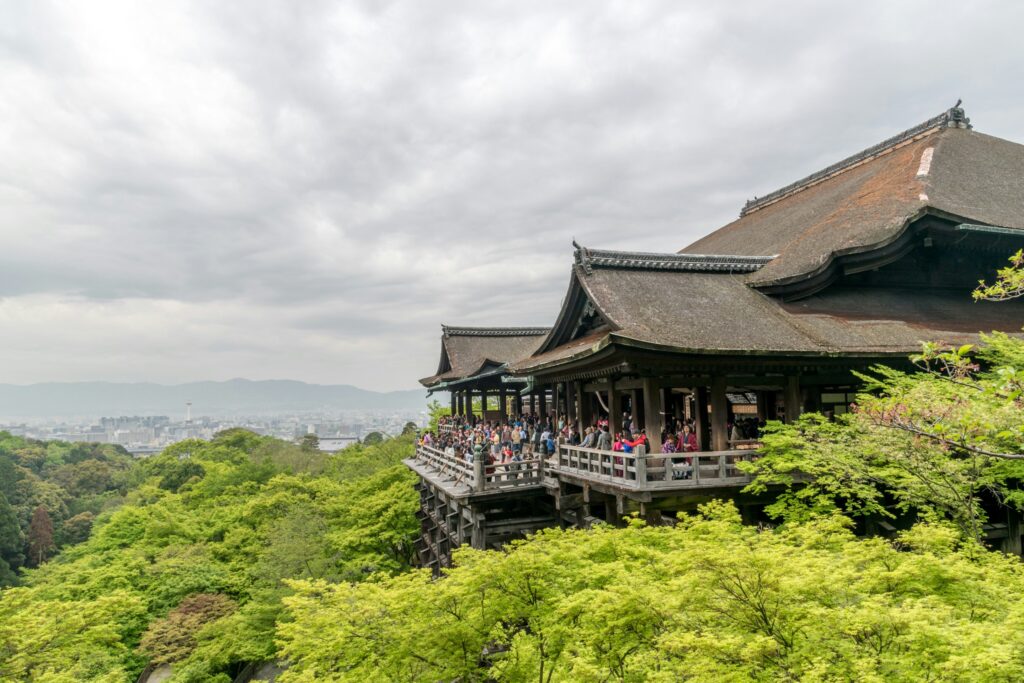
Packing for Kyoto requires a bit of strategic planning. In this section, we cover packing tips to ensure you’re well-prepared for your adventure in this historic city.
25. Pack for the Season
Kyoto experiences all four seasons quite distinctly, so packing with the weather in mind is essential. In spring (March to May), the weather is generally mild but can change quickly—bring layers like a cardigan or light jacket, and don’t forget an umbrella in case of spring showers.
Summer (June to August) is hot and humid, so opt for breathable fabrics like cotton and bring a hat, portable fan, and plenty of sunscreen.
Autumn (September to November) is one of the most beautiful seasons in Kyoto, thanks to the fall foliage. The temperatures are comfortable, but layering is still key for changing conditions throughout the day.
In winter (December to February), it gets quite cold and occasionally snowy. Make sure to pack warm clothes like sweaters, a heavy coat, gloves, and a scarf to stay cosy while you explore.
26. Carry Layers for Cold A/C
Even during the peak of summer, it’s not uncommon for trains and buses in Kyoto to blast their air conditioning to counter the outside heat. This can make public transport surprisingly chilly, especially if you’re wearing light, summer-friendly clothing. To stay comfortable throughout your journey, it’s a good idea to carry a light cardigan, sweater, or shawl in your bag. It won’t take up much space, and you’ll be glad to have it when moving between warm streets and icy train cars.
27. Bring a Foldable Umbrella
Kyoto’s weather can be unpredictable, particularly during the rainy season from June to July and again during the typhoon season in September. Sudden downpours are fairly common, and being caught without cover can dampen both your mood and your plans. To stay prepared without hauling around too much gear, pack a compact, foldable umbrella that easily fits into your bag. It’s one of those small things that can make a big difference in your daily comfort while exploring.
28. Wear Comfortable Walking Shoes

Kyoto is best enjoyed on foot, whether you’re weaving through temple paths, strolling along the Philosopher’s Path, or exploring its bustling markets and quiet lanes. This means comfortable walking shoes are an absolute must.
Choose well-cushioned sneakers or flats that can handle long stretches and uneven surfaces like cobblestone streets or stone steps. If you plan to dine at upscale restaurants or traditional tea houses, pack a pair of dressier shoes too — it never hurts to be prepared for a more polished occasion.
29. Wear Easy-Off Shoes for Temples
When visiting Kyoto’s many temples and shrines, it’s customary to remove your shoes before entering certain sacred areas. To make this process easy and stress-free, wear shoes that are simple to slip on and off — think sandals or loafers with minimal fuss.
If you’re going the sandal route, it’s polite to wear socks when entering these places, as it’s considered respectful and helps protect the wooden floors. Socks will also keep your feet warm, especially if you’re exploring early in the day or during cooler seasons when temple interiors can be quite chilly.
30. Pack Bug Spray for Summer Hikes
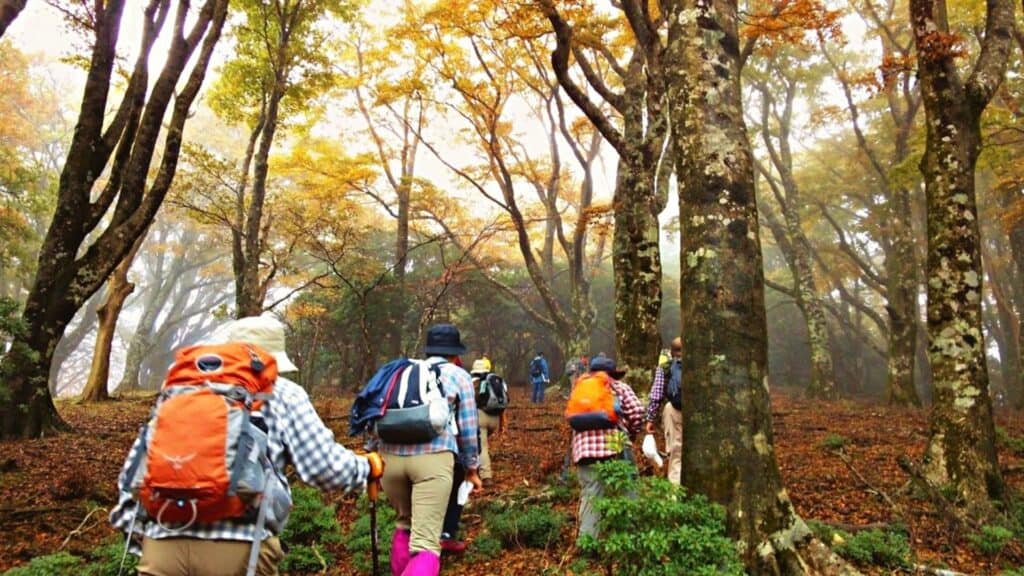
If your Kyoto itinerary includes time outdoors — especially around Arashiyama, Kurama, or other scenic trails — packing insect repellent is a smart move. Mosquitoes tend to be more active during the warmer months, particularly in shaded or forested areas. Applying repellent before you head out will save you from itching later, allowing you to focus on the beautiful scenery instead of swatting away bugs.
Tips for After Arriving in Kyoto

Arriving in Kyoto is an exciting moment, but can also be daunting. To help you settle in quickly and start your adventure smoothly, here are tips for your first few hours in the city.
31. Travel from Kansai Airport to Kyoto
Getting from Kansai International Airport (KIX) to Kyoto is straightforward, with several transport options depending on your budget and time.
One of the fastest and most convenient choices is the JR Haruka Express, which takes about 75 minutes to reach Kyoto Station. Tickets cost around ¥2,850, and trains run roughly every 30 minutes during peak hours.
A cheaper, though slower, alternative is the JR Kansai Airport Rapid Service, which gets you to Osaka for about ¥1,200, with a quick transfer to a local train that adds roughly ¥570 to your fare.
If you prefer a more direct and relaxed ride, limousine buses also run frequently from KIX to Kyoto for around ¥2,600.
And finally, taxis are available 24/7, offering door-to-door convenience, though they come at a premium — expect to pay between ¥15,000 and ¥20,000 depending on distance and traffic.
32. Travel from Itami Airport to Kyoto
Travellers arriving at Osaka’s Itami Airport also have a few solid options to get to Kyoto. The most convenient is the airport limousine bus, which goes directly to Kyoto Station in about 55 minutes. A one-way ticket costs roughly ¥1,340, and buses leave approximately every 30 minutes.
Alternatively, you can hop on the Osaka Monorail to Hotarugaike Station, then transfer to the Hankyu Takarazuka Line toward Kawaramachi Station in Kyoto. This option costs around ¥600 total and is relatively quick, with trains running every 10–15 minutes.
Taxis are also available outside Itami, providing direct service to Kyoto, though fares range between ¥10,000 and ¥15,000 — a higher cost best reserved for those with lots of luggage or travelling in a group.
33. Know Where to Exchange Currency
Exchanging currency in Kyoto is generally easy as long as you know where to look. If you prefer to handle it right when you arrive, both Kansai and Itami airports have currency exchange counters. While they’re convenient, the exchange rates may not be the best.
For more favourable rates, consider using ATMs inside 7-Eleven, Lawson, or Japan Post Bank branches — all of which accept most international cards and are widely available throughout the city. Another good option is to visit a dedicated currency exchange centre in popular areas like Kyoto Station or Shijo-Kawaramachi.
These spots often offer competitive rates and may have extended hours. Some hotels also provide currency exchange services, but rates there tend to be less favourable than city banks or ATMs.
34. Start Your Days Early in Kyoto
Kyoto operates at a different pace compared to the bustling cities of Tokyo or Osaka, particularly when it comes to evening activities. Most of the city’s famous temples and shrines close around 5 PM. To make the most of your visit, start your days early.
This approach not only allows you to appreciate these sites in the quieter morning hours but also ensures you can visit multiple attractions before they close. Since nighttime options are more limited, use the evenings to explore Kyoto’s culinary scene or take a relaxing stroll through its beautifully preserved districts like Gion or Pontocho.
35. Don’t Try to See Every Temple
Kyoto, with its approximately 800 Shinto shrines and 1,700 Buddhist temples, offers a vast tapestry of cultural and spiritual sites. Rather than attempting to visit them all, focus on a few renowned locations that intrigue you and allow for spontaneous explorations.
Many lesser-known shrines and temples are freely accessible, offering serene retreats and a more intimate glimpse into Kyoto’s rich heritage. This approach enhances your experience, allowing you to appreciate Kyoto’s depth at a relaxed pace.
Begin Your Kyoto Adventure
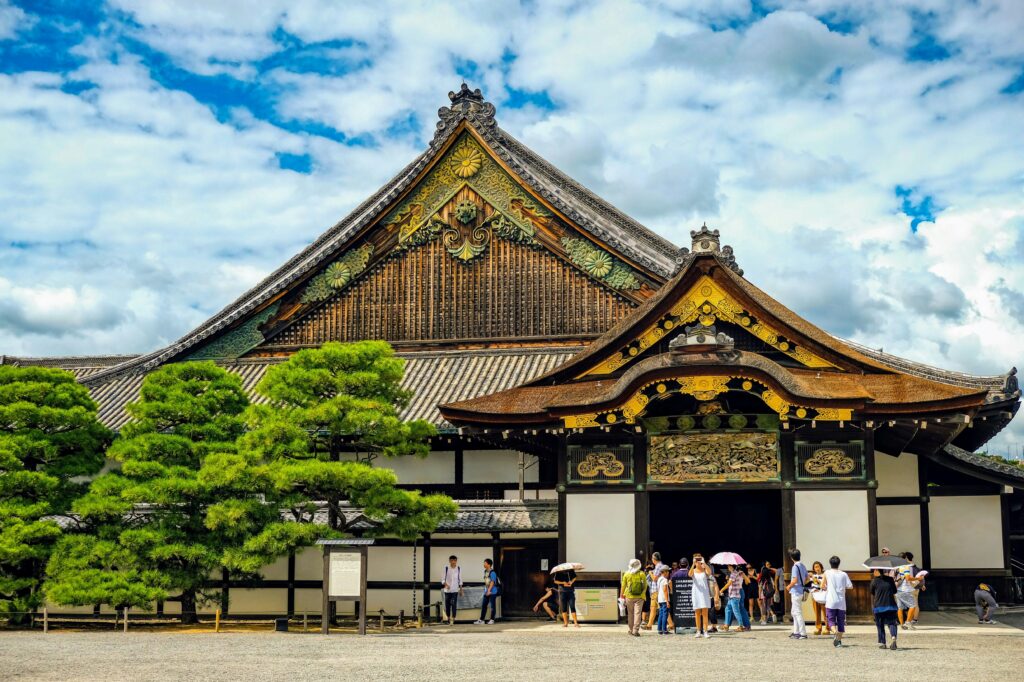
Armed with these 35 essential tips, you’re perfectly poised to explore Kyoto’s rich cultural tapestry. Whether you’re strolling through the serene bamboo groves of Arashiyama or marveling at the beauty of Kinkaku-ji, Kyoto promises a journey filled with wonder and discovery.
But don’t stop here—Japan has so much more to offer. Check out our guides for Osaka, Tokyo, and other enchanting destinations. Each locale has its own story to tell. Have a fantastic trip and soak in all the beauty Kyoto has to offer!



